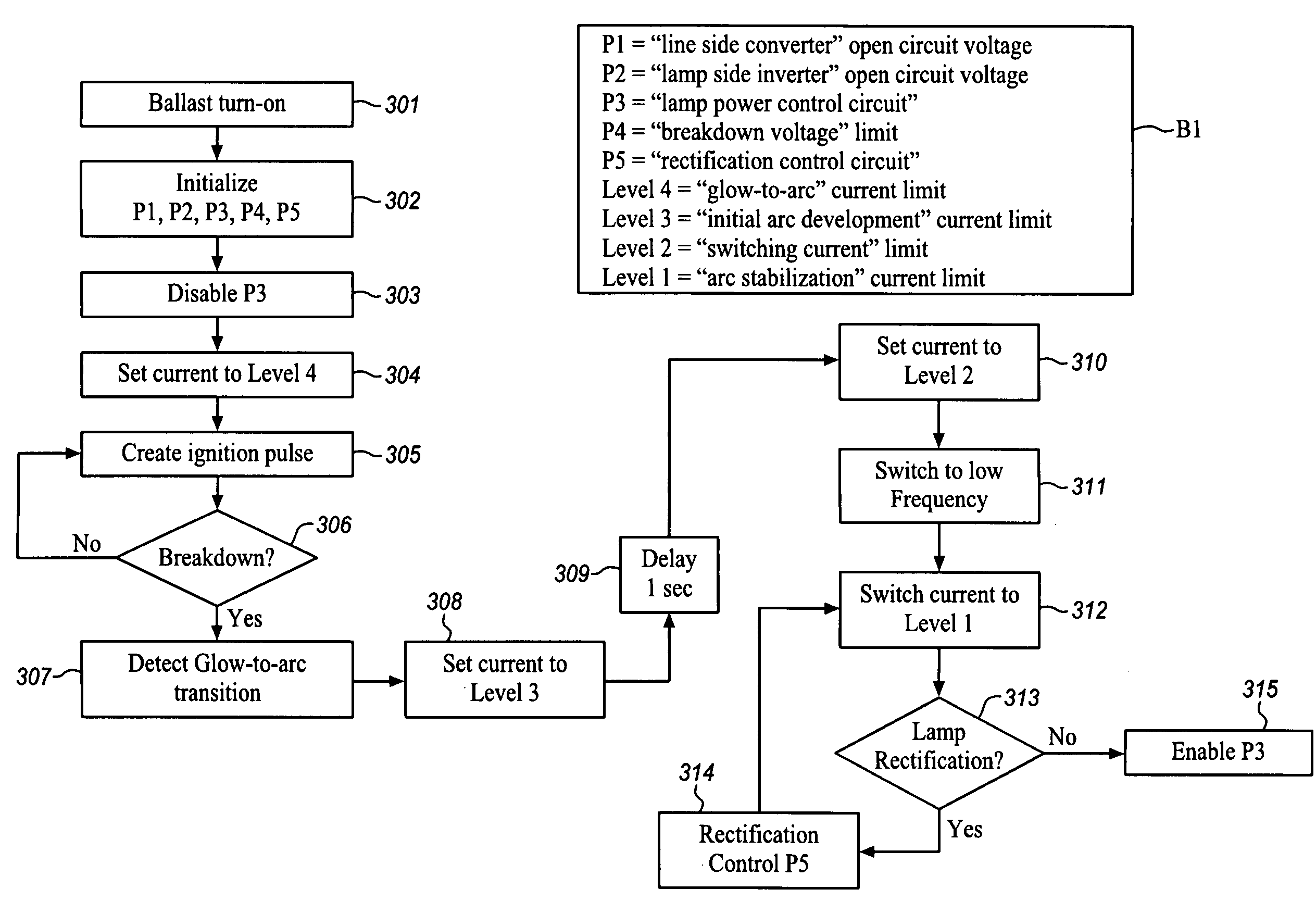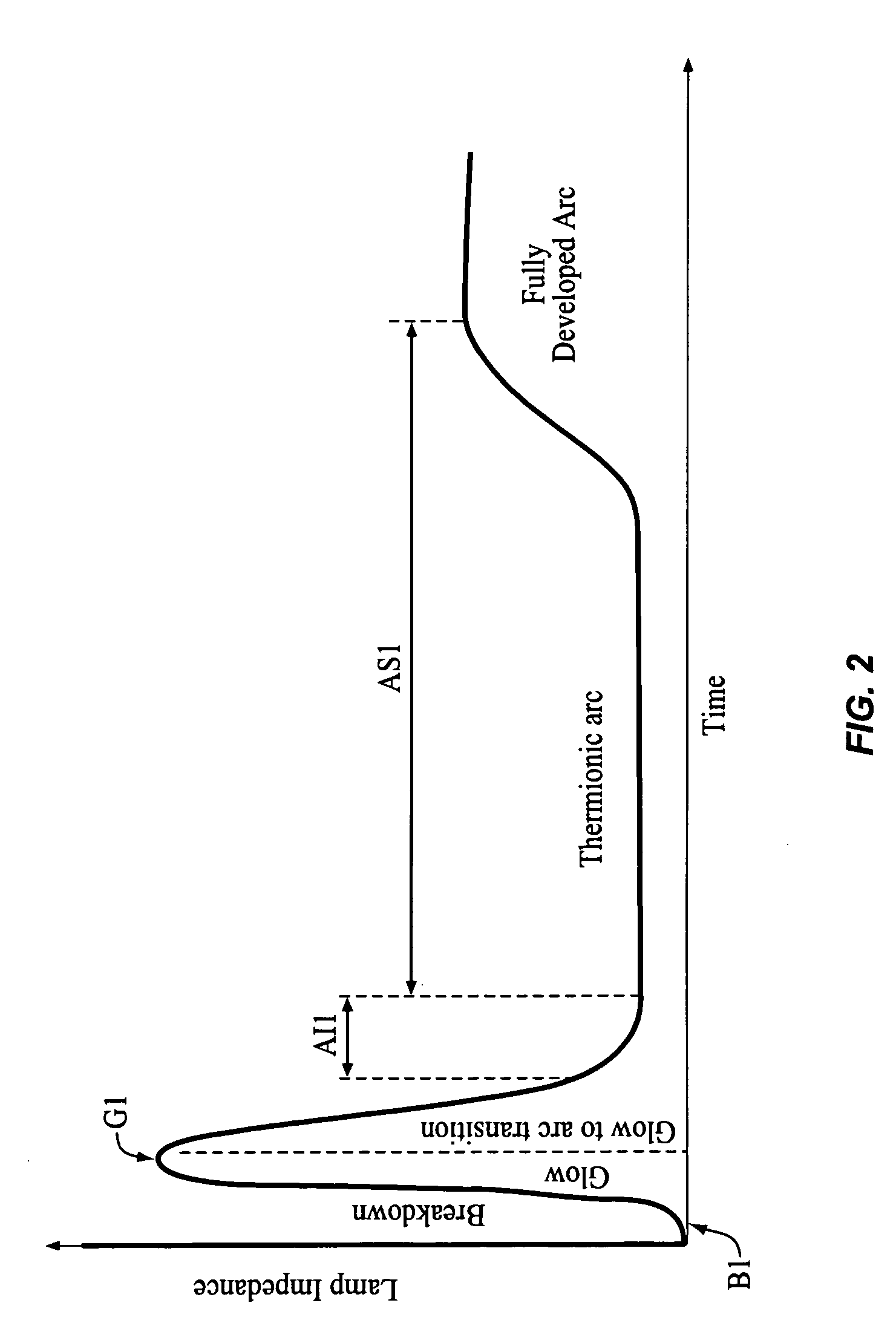Electronic ballast for high intensity discharge lamps
a technology of high intensity discharge and electronic ballast, which is applied in the direction of electric variable regulation, process and machine control, instruments, etc., can solve the problems of sputtering and heating of electrodes, difficult to incorporate in the design of magnetic ballast, and too complex or lack of completeness
- Summary
- Abstract
- Description
- Claims
- Application Information
AI Technical Summary
Benefits of technology
Problems solved by technology
Method used
Image
Examples
Embodiment Construction
[0032]High Intensity Discharge (HID) lamps are primarily used for large area illuminations. Unlike an incandescent bulb, a ballast device is necessary to ignite and operate an HID lamp. There are three primary functions of a ballast device, namely: 1) lamp ignition, 2) lamp power control, and 3) control of AC line transients and power quality. HID lamps have negative resistance characteristics. Because of these physical characteristics, all gas discharge lamps are current controlled. However, even by maintaining a constant current in the lamp, lamp power cannot be controlled over the life of the lamp because the lamp voltage typically increases over the life of the lamp. Therefore, complex electronic ballast circuits are required for the proper ignition, control, and operation of HID lamps.
Basic Architecture of Electronic Ballast
[0033]FIG. 7 illustrates, in block diagram form, the typical architecture of electronic ballast, which is powered by AC source, while FIG. 8 illustrates, in...
PUM
 Login to View More
Login to View More Abstract
Description
Claims
Application Information
 Login to View More
Login to View More - R&D
- Intellectual Property
- Life Sciences
- Materials
- Tech Scout
- Unparalleled Data Quality
- Higher Quality Content
- 60% Fewer Hallucinations
Browse by: Latest US Patents, China's latest patents, Technical Efficacy Thesaurus, Application Domain, Technology Topic, Popular Technical Reports.
© 2025 PatSnap. All rights reserved.Legal|Privacy policy|Modern Slavery Act Transparency Statement|Sitemap|About US| Contact US: help@patsnap.com



